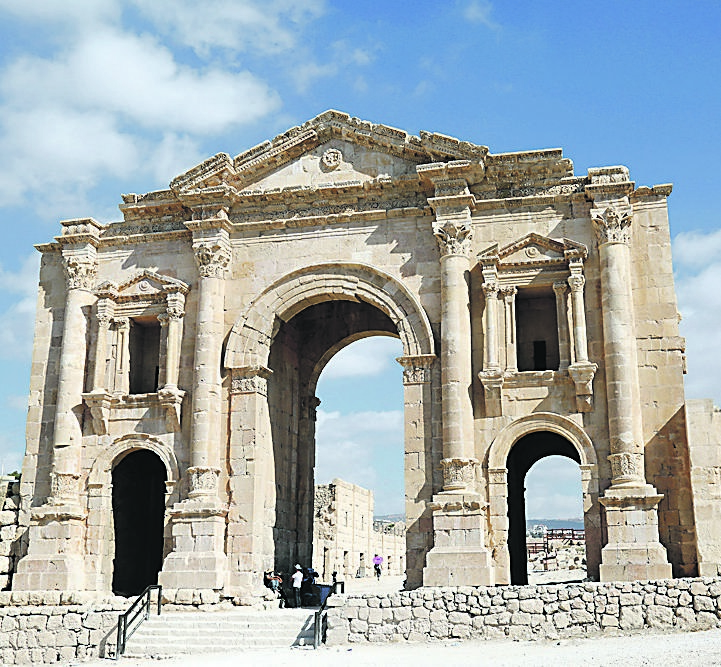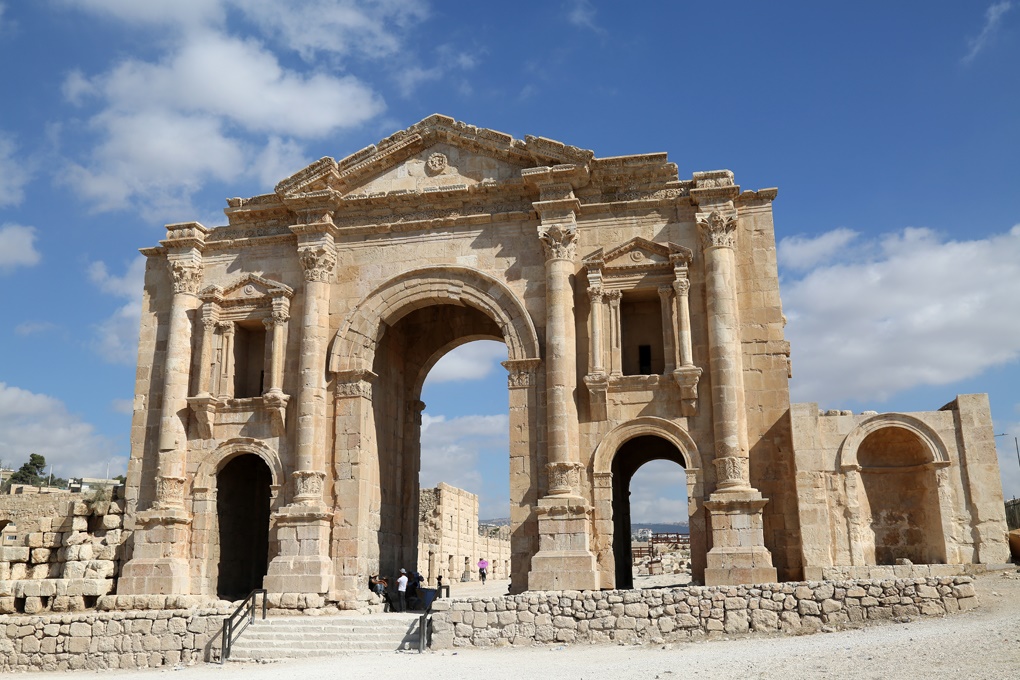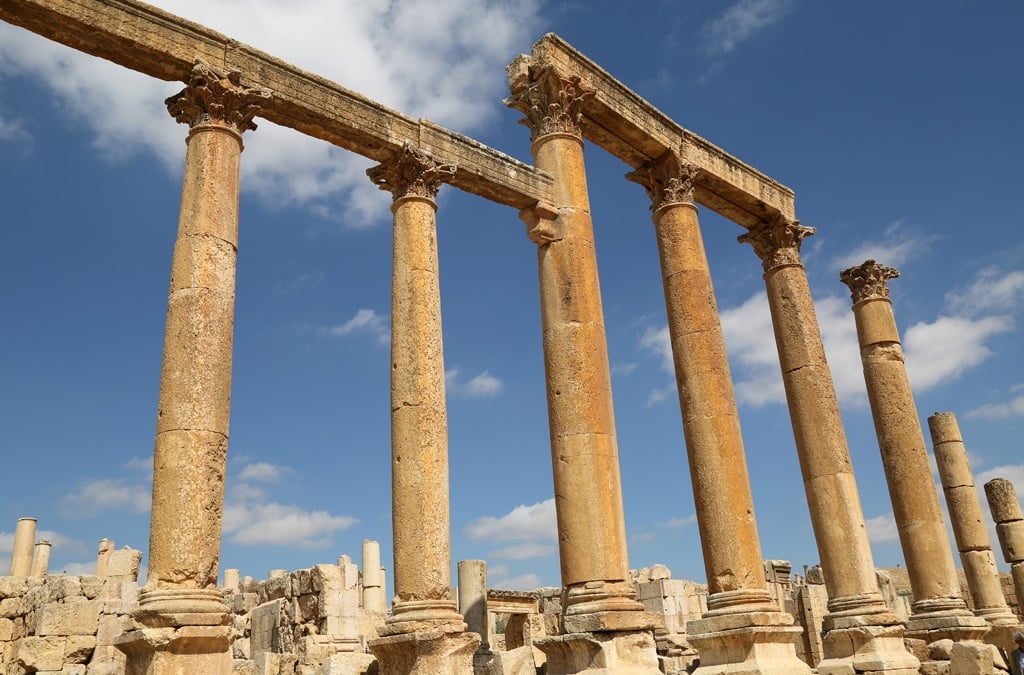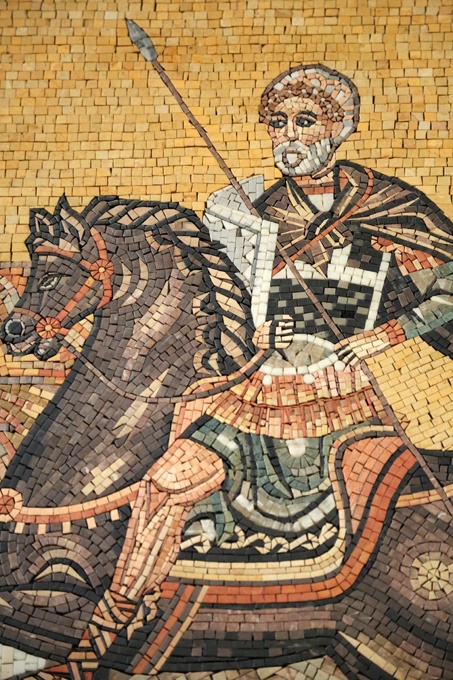
Underrated as a destination, Jordan is a land with some of the oldest cities on Earth. And no brochure or traveller’s tale will prepare you for your first sight of Petra, writes globe-trotter Kate Turkington.
I’m chatting to the tallest man in Jordan in the ancient city of Jerash, where people have been living for more than 6 500 years.
The city, at its most beautiful and mightiest during Roman rule, is now considered to be one of the best-preserved Roman provincial towns in the world. It’s breathtaking. Think huge public squares, long paved streets lined with pillars, majestic temples, mosaic pavements, public baths and a hippodrome where gladiators fought, chariots raced and the crowds came for their bread and circus.
Ahmad, the tallest man in Jordan, is over 2m tall and plays basketball for Yorkshire in the UK. He is on leave and is helping out in his father’s tiny curio shop in the souk at the entrance to the Roman city. I buy three hand-painted ceramic bowls from him and ask him about xenophobia in England.
“Jordanians are known to be gentle and peace-loving,” he tells me. “We have no problem.”
But it’s no wonder that Jordan, which is almost land-locked, is probably the most peaceful country in the strife-torn Middle East. Strategically located at the crossroads of Europe, Africa and Asia, and bordered by Israel and Palestine to the west, Syria to the north, Iraq to the northeast and Saudi Arabia to the south with just a tiny shoreline on the Red Sea at its extreme tip, it’s obviously prudent to stay friends with your neighbours. Although Jordan is a far from rich country, it has opened its arms and heart to the less fortunate. Hundreds of refugees still stream across the border from Syria every day and there are now more than 3 million scattered in camps and cities across the country.
Awe-inspiring Petra
But millions of other people have been coming to Jordan for centuries for a different reason – to marvel at the world-famous ancient city of Petra in the country’s southwest, one of the new Seven Wonders of the World.
Petra’s story has a fairy tale quality about it. Built by Nabataean Arabs (King Herod’s mother was a Nabataean), by the 1st century BC, it was rich and powerful not only because of its trade in frankincense, myrrh and spices, but also because of its position at the crossroads that linked southern Arabia, China and India with Rome, Egypt, Syria and Greece. However, by the 16th century, this 40km2 sprawling city of public buildings, tombs, marketplaces, palaces, lush green gardens and tinkling fountains was “lost” to the world, other than to a few Bedouin tribes that roamed the surrounding desert.
But, in 1812, an adventurous Swiss traveller, Johann Ludwig Burckhardt, who was self-taught in Arabic, persuaded his local guides to take him to the rumoured site of the “lost city”. If you’ve seen the movie Indiana Jones and the Last Crusade or Transformers: Revenge of the Fallen, you will have had a glimpse of this wonderful city.
Nothing prepares you for your first sighting of Petra.
The pale desert sun is just beginning to rise when I start my walk through Al Siq, the towering 1.2km-long gorge that leads into the old city. Apart from our group of friends, there’s hardly a soul about.
“The Arab Spring was the Winter of Tourism for Jordan,” our guide Artif remarks sadly, citing the subsequent tragic wars that have engulfed neighbouring countries and kept many tourists away.
Sometimes the towering walls of the narrow canyon are so high that we can hardly see the sky. They are lined with ancient tombs and water channels, monuments to the gods, eroded statues, sacred stones and hollowed-out chambers.
Under our feet are Roman pavements and other centuries-old stones and slabs, loose sand and shards of rock. A donkey clatters by with a be-turbaned boy urging it on with kicking heels. The shadowy atmospheric gorge throws back the echo.
This was once the main caravan route into the city where throngs of traders, visitors, merchants and camel trains made their way.
Finally, the gorge narrows so much that we must almost walk in single file for 100m, then it widens out into a truly wondrous sight – the 40m-high Treasury at the entrance to the city. Apparently, it was never a treasury, but is a tomb, known locally as Al-Khazneh.
We sit on rocky ledges in the main plaza for more than an hour as the sun’s rays illuminate the very top of the elaborately carved sandstone building and then slowly creep down the ornate pillars, the carved friezes, the pediment and arches. Sitting camels gaze morosely while waiting to give rides to keen visitors. Two portly locals, dressed as Nabataean warriors, lean nonchalantly against a wall that has seen people come and go from all over the known world for thousands of years. Vendors appear and offer us “silver” jewellery, traditional headscarves and essential bottles of water because, by 10am, it is very hot indeed.
For the rest of the day, we explore just a fraction of this “rose-red” city – from the Colonnaded Street, once Petra’s main shopping area and the spectacular Great Temple, to the Theatre, which is hewn out of a single block of sandstone and where 4 000 spectators at a time climbed up to three rows of seats to watch the entertainment, and the Royal Tombs carved high on a mountainside. But this is only a fraction of Petra. A day, a week, a month, maybe a lifetime, is not nearly enough time to see all the city’s riches where archaeologists still uncover amazing new finds every day.
Ancient cities
But there’s much, much more to Jordan than Petra. There is its capital, Amman, one of the oldest cities in the world – so old that it is mentioned in the Bible as Rabath Ammon. There’s the desert of Wadi Rum, described by Lawrence of Arabia as “vast, echoing and God-like”. Veteran jeeps take us into its immense interior, where huge monolithic rocks rear up from the desert floor and I spot a fiscal shrike perched on a solitary saltbush.
There’s Mount Nebo, the burial place of Moses, where colourful mosaics cover the floors of the church where pilgrims have worshipped since biblical times. There’s the ancient Kerak Castle, where Christian warriors sought to impose their faith on people who believed differently, and “Bethany Beyond Jordan” as quoted in the Bible where Jesus was baptised by John the Baptist in the River Jordan.
Gaze out over Jordan’s “Grand Canyon”, the Wadi Mujib gorge, go to the vibrant seaside town of Aqaba for some of the world’s best scuba diving and snorkelling, or float in the Dead Sea. We covered ourselves in the rich, black rejuvenating Dead Sea mud and all claimed we felt years younger.
Jordan exceeds expectations. Perhaps because it can’t afford big-budget tourism advertising, it’s not particularly well known – other than Petra – as a major tourist destination, but it’s certainly one of the most fascinating countries I have visited. Go there and experience its incredible history, its stark beauty, its friendly people and its delicious food – and prepare to be amazed.
- Turkington’s trip was arranged by Pannell’s Tours, Knysna. Visit pannellstours.com




 Publications
Publications
 Partners
Partners













